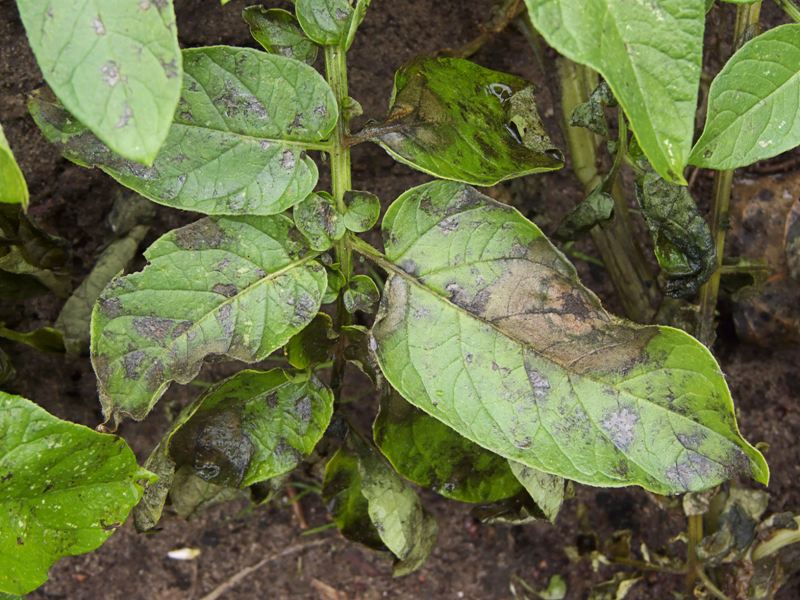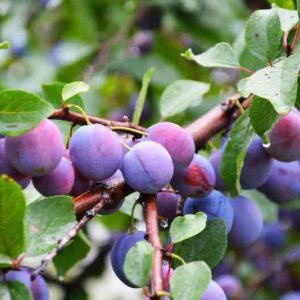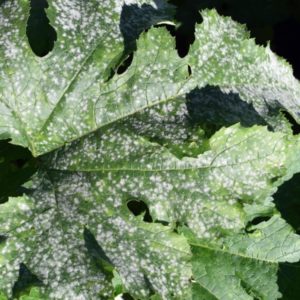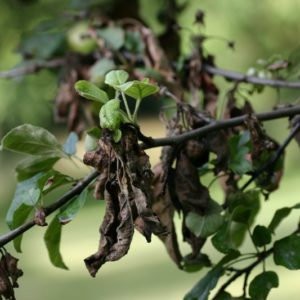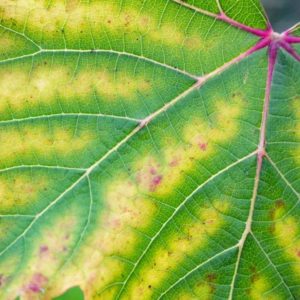When we talk about “phytophthora,” we are not talking about a single disease. The term, in fact, groups together many phytopathology with more or less important consequences (crown rot, mildew, ink disease, etc.). It is, therefore, more correct to speak of “phytophthoras.”
Fortunately, the symptoms, the means of prevention and control are quite similar between the different diseases. Follow our guide to learn more about phytophthoras.
General information on phytophthoras

Biology and propagation:
Phytophthoras are fungi of the Oomycetes family. They are, therefore, the cause of so-called fungal diseases. The etymology of the word comes from the Greek ” Phyto,” which means ” plant, vegetable,” and from ” Phtora,” which can be translated as ” I destroy. ”
Contamination and spread of the disease are through the “seeds” of fungi called spores or zoospores (motile spores). Once in the ground, they can be stored for many years while waiting for a new host.
Some species like P. Citricola mainly attack the root system. However, they can still affect the leaves if spores or contaminated soil settle there.
What plants are concerned?:
There are over a hundred different species of phytophthoras. Some only affect a specific host :
- Phytophthora phaseoli which is the late blight of beans ;
- Phytophthora infestans which corresponds to late blight of Solanaceae (such as tomatoes ); phytophthora fruit damage
- Phytophthora fragariae, also called “red stele” and which attacks strawberries ;
- etc.
On the other hand, other species have a much wider field of action: they are polyphagous. Those that generally affect ornamental plants are:
- Phytophthora cryptogea ;
- Phytophthora cinnamomi, responsible for the ink of oak or chestnut ;
- Phytophthora citricola ;
- Phytophthora cactorum, responsible for bitter rot or leather rot on fruits such as apples or strawberries;
- Phytophthora cambivora.
Phytophthoras can attack all types of plants: vegetables, perennials, shrubs, trees, etc.
Important note: Phytophthora ramorum is a particularly virulent species. Long confined to the United States and Great Britain, it first appeared in France in the early 2000s. The first subjects affected were viburnum and rhododendrons. However, since 2017 larches have been contaminated and Japanese larch is also not recommended for planting.
Conditions of appearances:
Many situations are facilitating the appearance of psychopathologies in general and phytophthoras in particular:
- Plants are also subject to stress (lack of water or, contrary to overabundance, excess nitrogen, etc.). This stress weakens the plants and thus makes them much more vulnerable to attack.
- Growing crops that are too close to each other promotes the appearance of fungi (increased humidity, poor ventilation) and the spread of diseases through simple contact.
- The clay soil and compact, often called “heavy soil,” easily retain water. In some situations, this is a good thing, but standing water is a very favorable development ground when it comes to phytophthoras.
Symptoms related to phytophthoras

Phytophthoras can attack all parts of a plant, from roots to leaves to stems.
Roots and bases of stems (foot):
As a rule, it is the roots and the base of the plant (the crown) that are most often affected by phytophthoras. This then results in rotting the root system, its discoloration and the absence of rootlets (small nourishing roots).
When the root collar is reached and the plant is dying, it is possible to see the attack zone located just above ground level. It is quickly recognized because it is located at the border between the healthy part on the top and the affected part below, which presents a brown or reddish-brown color.
Foliage:
Phytophthora symptoms when the symptoms are visible on the leaves (wilting, dieback), means that the root part is already well affected or that the foot is invaded. The plant is then unable to synthesize chlorophyll due to the lack of water and nutrients.
Some species of phytophthora can directly infect the leaves without going through the roots. The main symptom is the appearance of dark brown to black leaf spots with a wet texture. The disease then spreads through the leaf blade, reaching the petiole and then the stem.
Stem:
Like leaves, other Phytophthora species can directly target stems. They then cause brownish to black lesions. The direct consequence is wilting and dieback of the foliage above the lesions. On the other hand, the plant’s part located under the lesion remains healthy (roots and crown included).
Prevent the appearance of a phytophthora

To limit the risks of the appearance of a phytophthora, it is enough to follow a few rules:
- The zoospores having the particularity of moving in the soil’s water, it is necessary to limit the cultures in heavy soil (clayey) or poorly drained. The stagnation of water is then conducive to the spread of the disease. If necessary, lighten your soil by incorporating sand.
- Although space the plants and crops. This will prevent the creation of conditions favorable to the disease and limit contagion risk if it occurs.
- Make watering feet and not spray on the foliage.
- Disinfect your tools after each job. Hygiene is important, even in the horticultural environment. You can also treat pots or trays that you reuse during repotting with a disinfectant.
- After a purchase, inspect the plants and don’t hesitate to quarantine them before planting them in your garden or vegetable patch.
- When you propagate your plants (by division, cuttings, layering, etc.), be sure to use healthy plants. In the case of cuttings, take cuttings far from the ground.
- In the vegetable garden, diversify your crops and keep sensitive species away from each other. Likewise, rotate your crops every year.
Control and treatment

Despite all the precautions taken, your plants may still be attacked by a phytophthora. In this case, it is imperative to clean the area by collecting all the infected elements (leaves, stems, roots) and burning them.
The last step is to treat the contaminated subjects. There are some means of struggle that will not be the same depending on the parts affected.
Foliage:
This is perhaps the easiest situation to deal with. In fact, phytophthoras attacking the leaves are, most of the time, responsible for downy mildew. To treat it, all you need to do is get the Bordeaux mixture and sprinkle it on the affected subjects, following the instructions for use provided by the manufacturer.
Soil, root:
phytophthora treatmentTelluric phytophthoras, growing in the soil and attacking the roots, are not easy to treat. The best way to prevent them and to fight in the event of an attack is to rotate your crops, choosing species with little or no susceptibility to the fungus.
Some fungicides can nevertheless be used, such as fosetyl ‑ Al (fosetyl aluminum), marketed under the name Aliette. The treatment is both preventive and curative and can be used on many crops (vegetables and fruit trees). This is a so-called “systemic” product, i.e., it penetrates the plant organism to fight against the disease. It is systemic descending (action on the roots) and ascending (action on the leaves).
Other products based on mancozeb or dimethomorph can also be used.
For all defenders of organic agriculture know that, unfortunately, at present, there are no natural curative solutions to phytophthoras. Nevertheless, studies are being carried out to determine the effectiveness of biological control agents (BCA) in the fight against Oomycetes such as phytophthora (1).
Security rules :
When you use phytosanitary products to fight against the attack of a phytophthora, it is essential to protect yourself well and respect the manufacturer’s recommendations. If necessary, and in case of doubts, do not hesitate to refer to the Safety Data Sheets (SDS) that manufacturers must make available free of charge on their website.
